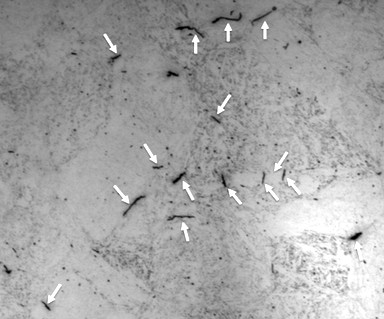

It is demonstrated that a macroscopically homogeneous distribution of tiny cracks introduced into a martensitic bearing steel sample can provide powerful hydrogen traps. The phenomenon has been investigated through thermal desorption spectroscopy and hydrogen permeation measurements using both cracked and integral samples. The effective hydrogen diffusion coecient through the cracked sample is found to be far less than in the un- cracked one. Similarly, when samples are charged with hydrogen, and then subjected to thermal desorption analysis, the amount of hydrogen liberated from the cracked sample is smaller due to the trapping by the cracks. Theoretical analysis of the data shows that the traps due to cracks are so strong, that any hydrogen within the cracks can never in practice de-trap and cause harm by mechanisms that require the hydrogen to be mobile for the onset of embrittlement.
Metallurgical and Materials Transactions A 46 (2015) 665-673.

| PT Group Home | Materials Algorithms |